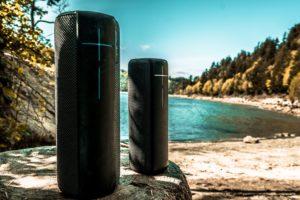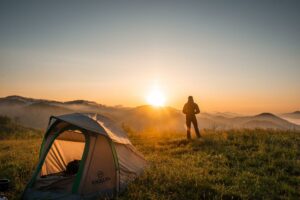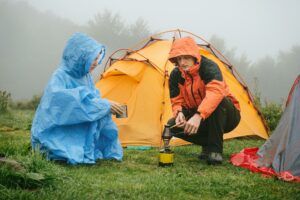A good night’s sleep is essential for any outdoor adventure, and picking the right sleeping bag can make all the difference. With a wide range of options available, finding the perfect sleeping bag might seem daunting. Fear not! In this blog post, we’ll provide you with essential tips to help you pick a good sleeping bag that will keep you warm, comfortable, and ready to tackle your outdoor escapades.
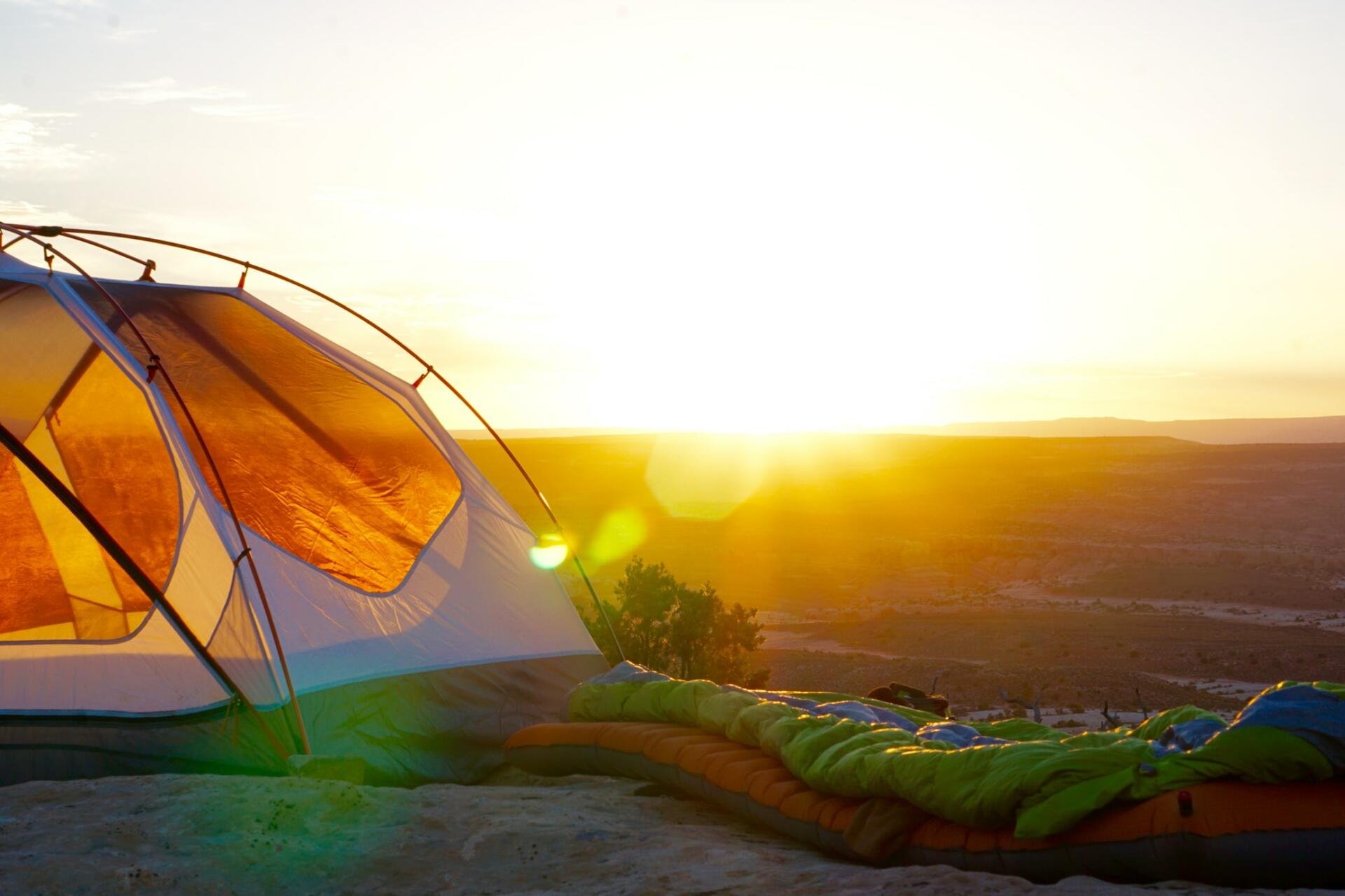
Consider Temperature Ratings
The most critical factor in choosing a sleeping bag is its temperature rating. Sleeping bags are typically categorized into three temperature ratings: summer, three-season, and winter. Summer bags are lightweight and designed for warm weather camping, while three-season bags offer versatility for spring, summer, and fall. Winter bags are insulated for sub-zero temperatures. Choose a bag with a temperature rating suitable for the coldest temperatures you expect to encounter during your trips.
Insulation Material
Sleeping bags come with two primary types of insulation: down and synthetic. Down insulation is lightweight, highly compressible, and provides exceptional warmth, making it ideal for cold conditions. Synthetic insulation, on the other hand, is more affordable, retains its insulating properties even when wet, and is suitable for damp environments. Consider the conditions you’ll be camping in and choose the insulation material accordingly.
Size and Shape
The size and shape of the sleeping bag can significantly impact your comfort. Sleeping bags are available in various lengths and widths, so ensure that you pick one that suits your body size and sleeping style. If you’re a side sleeper or like to move around in your sleep, consider a slightly roomier bag. Additionally, some bags come with a mummy shape that tapers at the feet, providing better warmth retention.
Packability and Weight
If you’re going on multi-day backpacking trips, the packability and weight of the sleeping bag are crucial factors. Lightweight and compressible sleeping bags are ideal for backpackers, as they won’t add unnecessary bulk or weight to your gear.
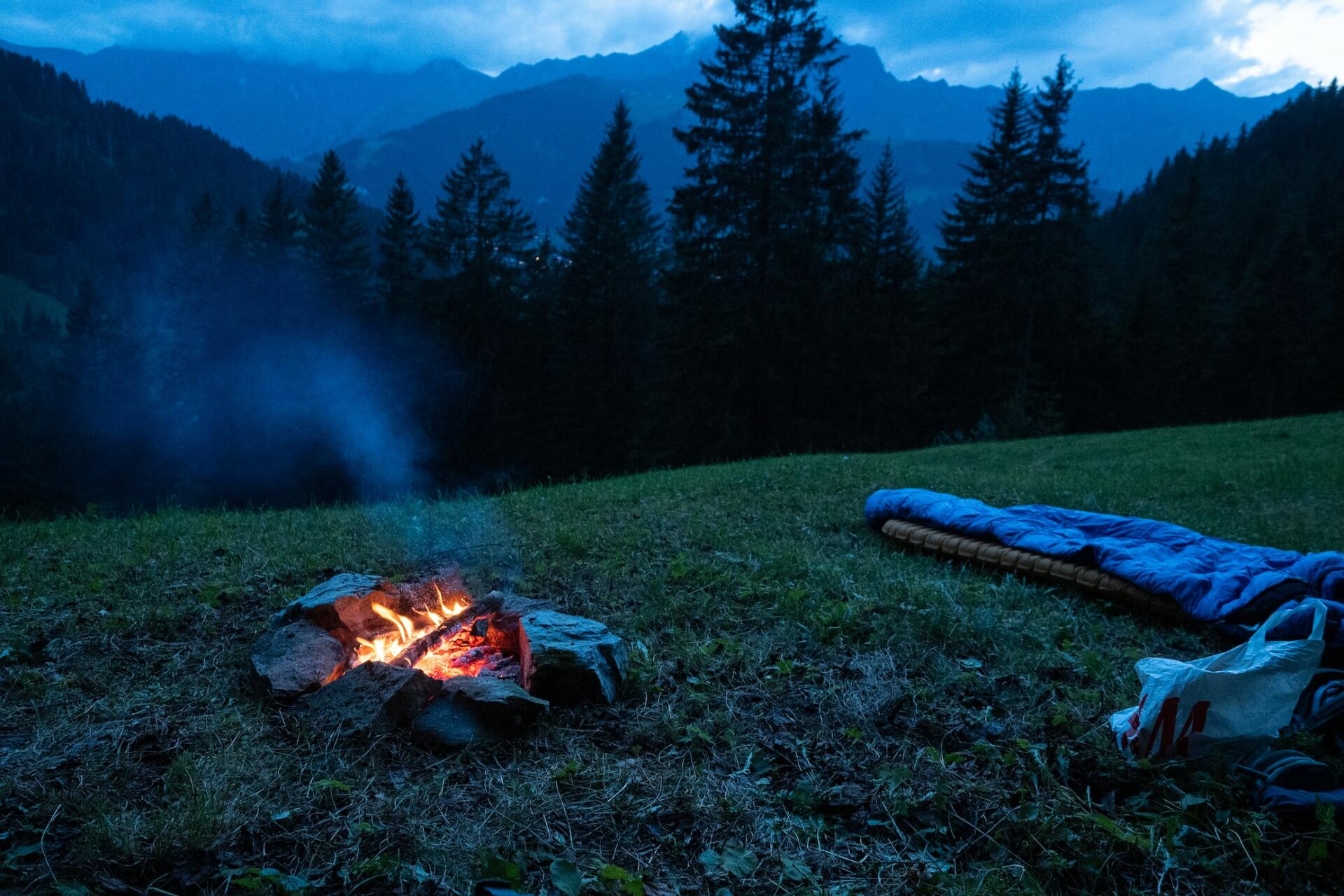
Zipper and Ventilation Options
A well-designed zipper is essential for easy access and ventilation. Some bags come with a full-length zipper, allowing you to open the bag fully for ventilation on warmer nights. Others have dual zippers, enabling you to vent your feet or body separately. Consider the type of zipper and ventilation options that best suit your needs.
Hood and Collar Design
A hood and collar are essential features for retaining body heat during colder nights. A well-designed hood can provide additional warmth for your head, while a draft collar prevents cold air from seeping into the bag. These features are particularly important in winter or colder camping conditions.
Additional Features
Look for additional features that enhance comfort and functionality, such as an internal pocket for storing small essentials, a pillow pocket to keep your pillow in place, and anti-snag zippers for hassle-free usage.
Picking a good sleeping bag is a crucial investment in your outdoor comfort. Consider factors like temperature ratings, insulation material, size, shape, packability, and weight to find the perfect sleeping bag for your adventures. Remember that a well-suited sleeping bag will not only keep you warm and cozy but also contribute to a rejuvenating night’s sleep, setting the stage for enjoyable outdoor experiences. So, equip yourself with the perfect sleeping bag, and rest assured that you’ll be ready for any camping expedition that comes your way. Happy camping and sweet dreams!
